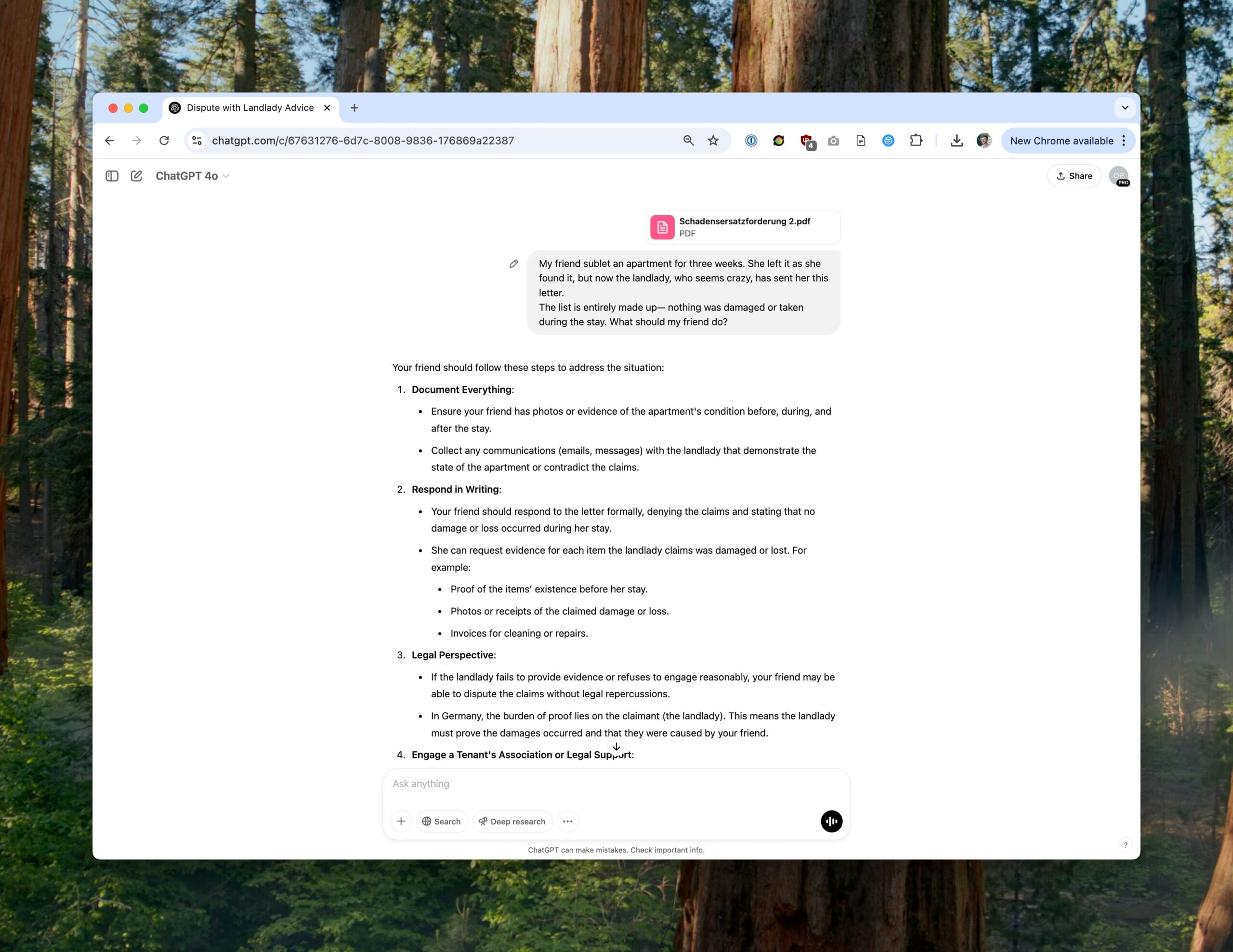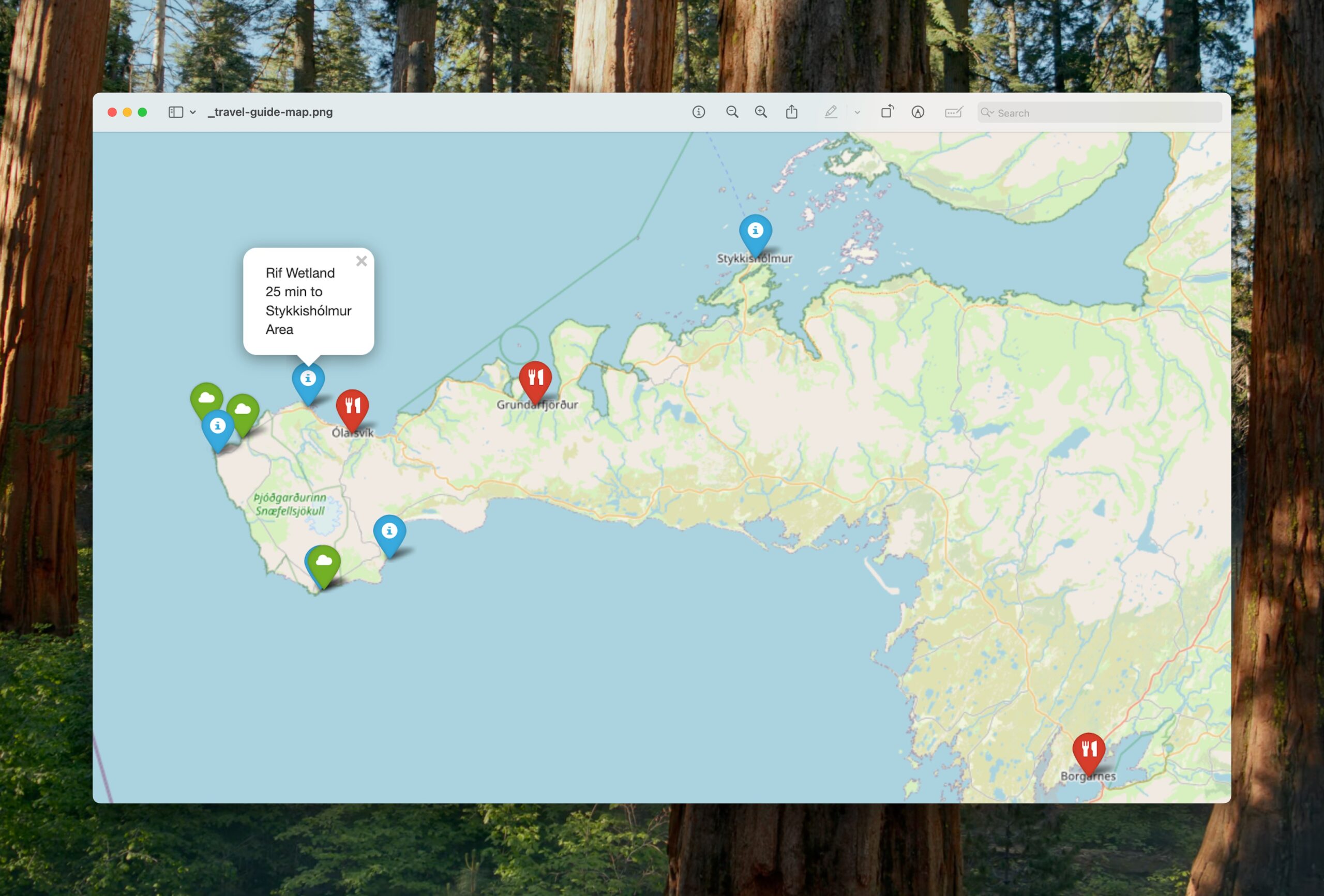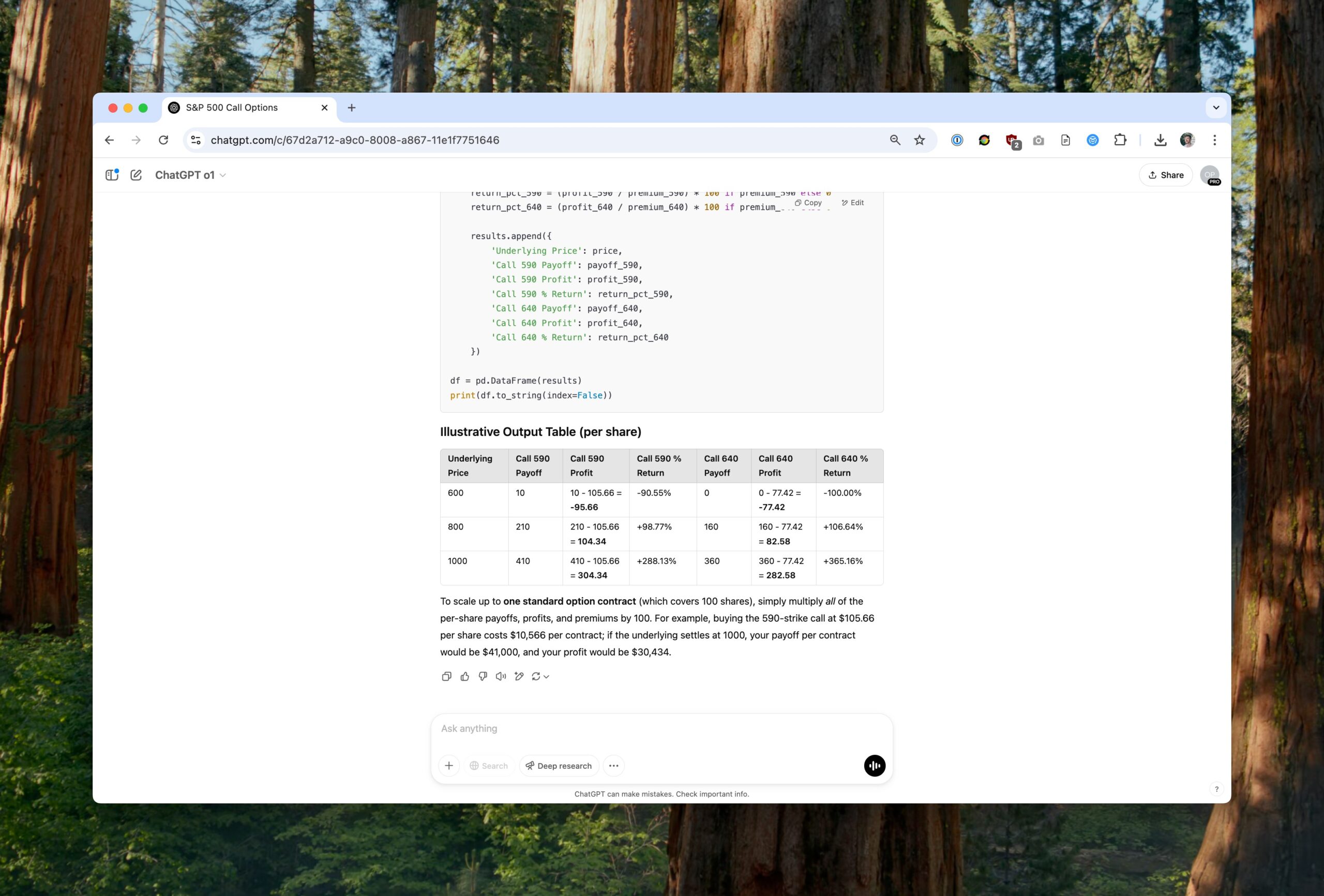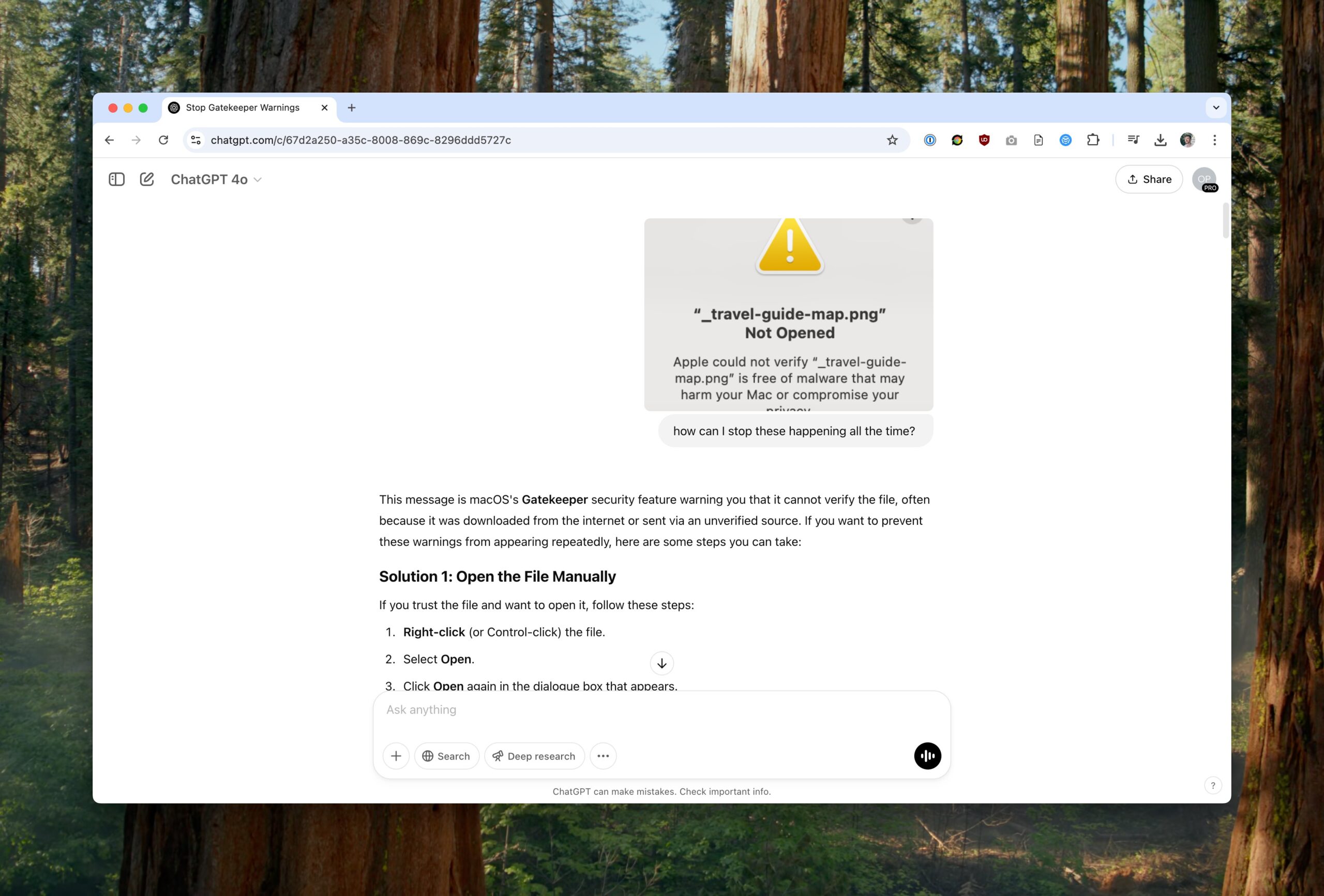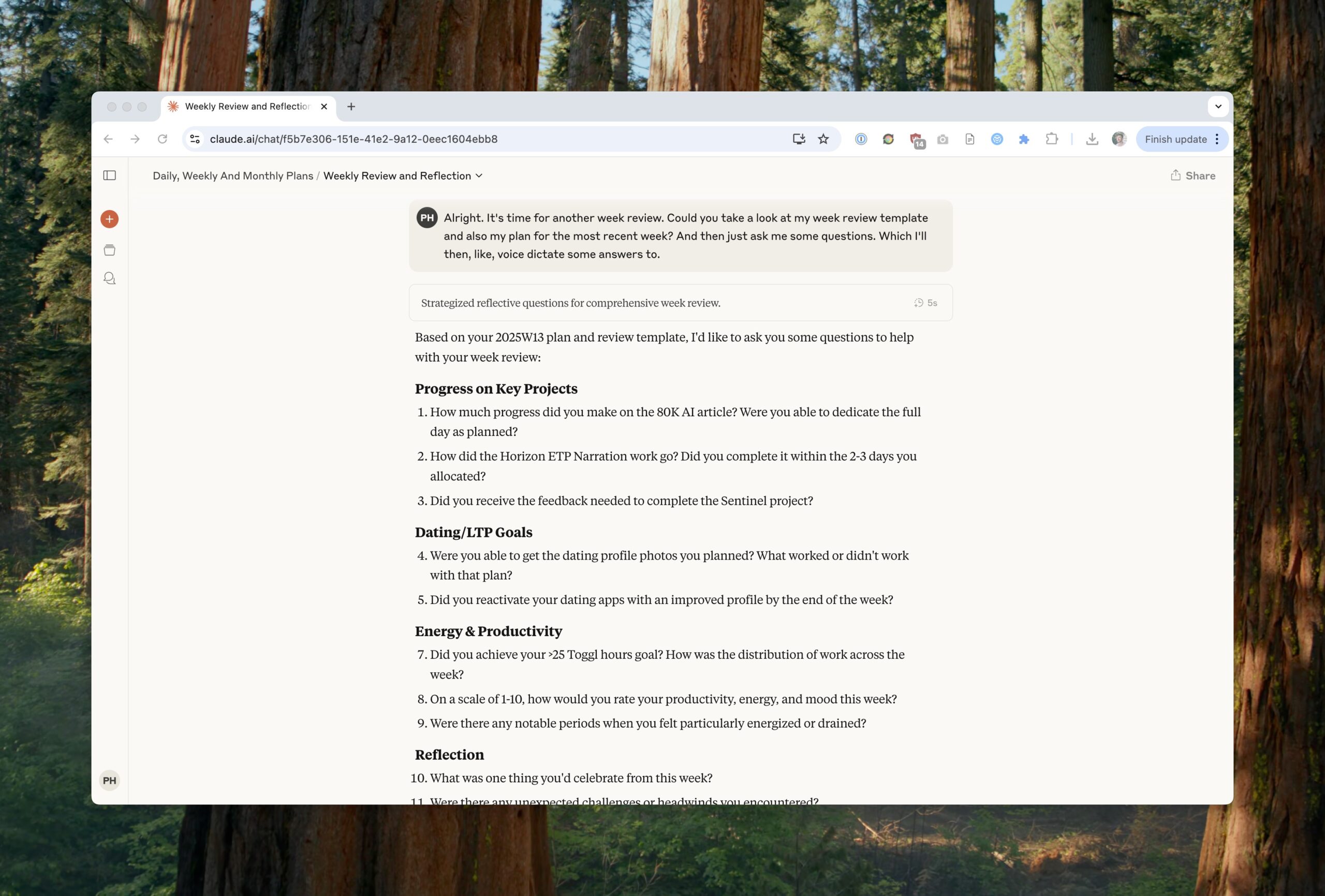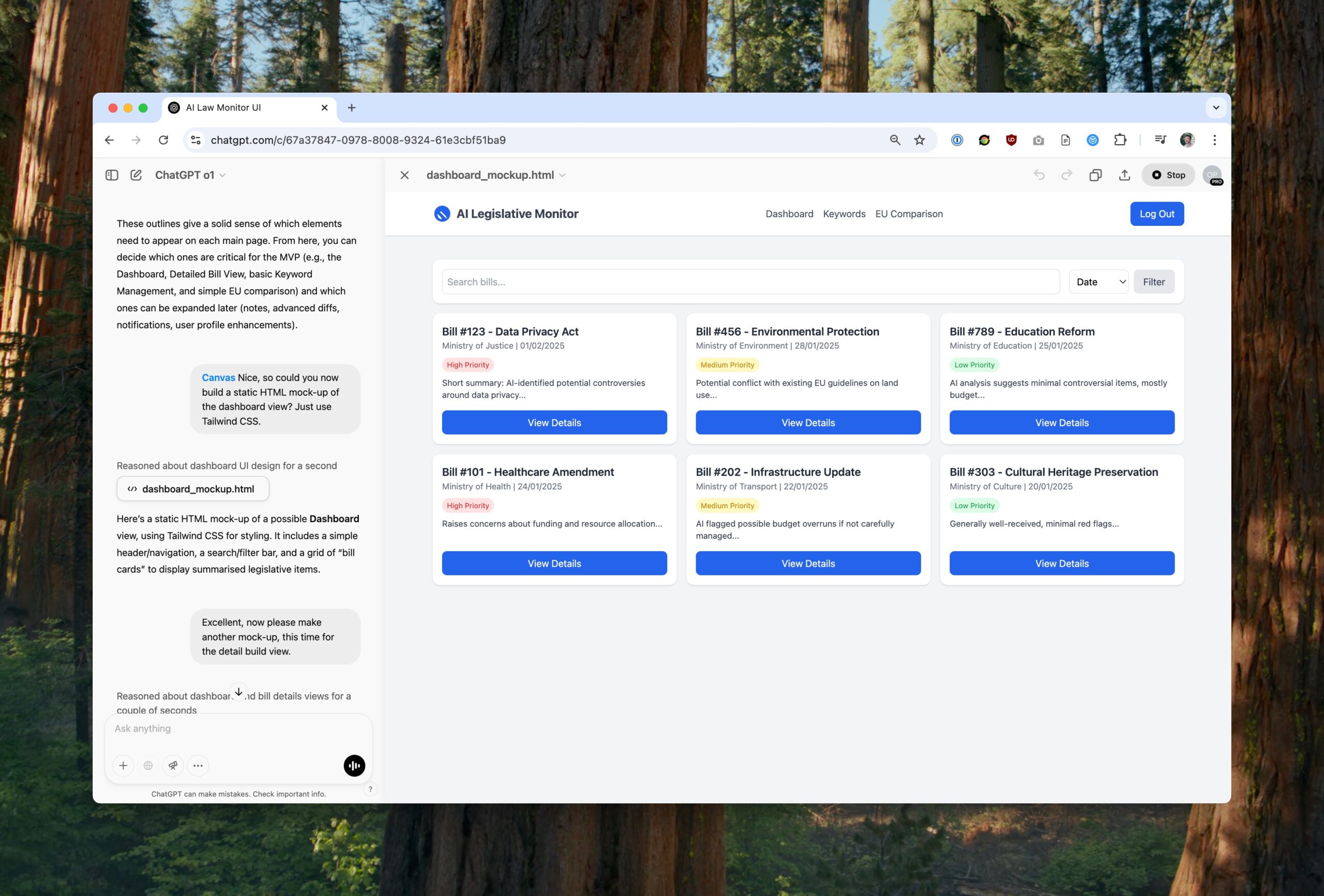To understand AI, you should use it. Here’s how to get started.
To truly understand what AI can do — and what is coming soon — you should make regular use of the latest AI services.
This article will help you learn how to do this.
Table of Contents
1. You have a team of experts
Think of ChatGPT as a team of experts, ready to assist you.1
Whenever you have a question, task, or problem, consider who you’d want in the room if you could talk to — or hire — anyone in the world.
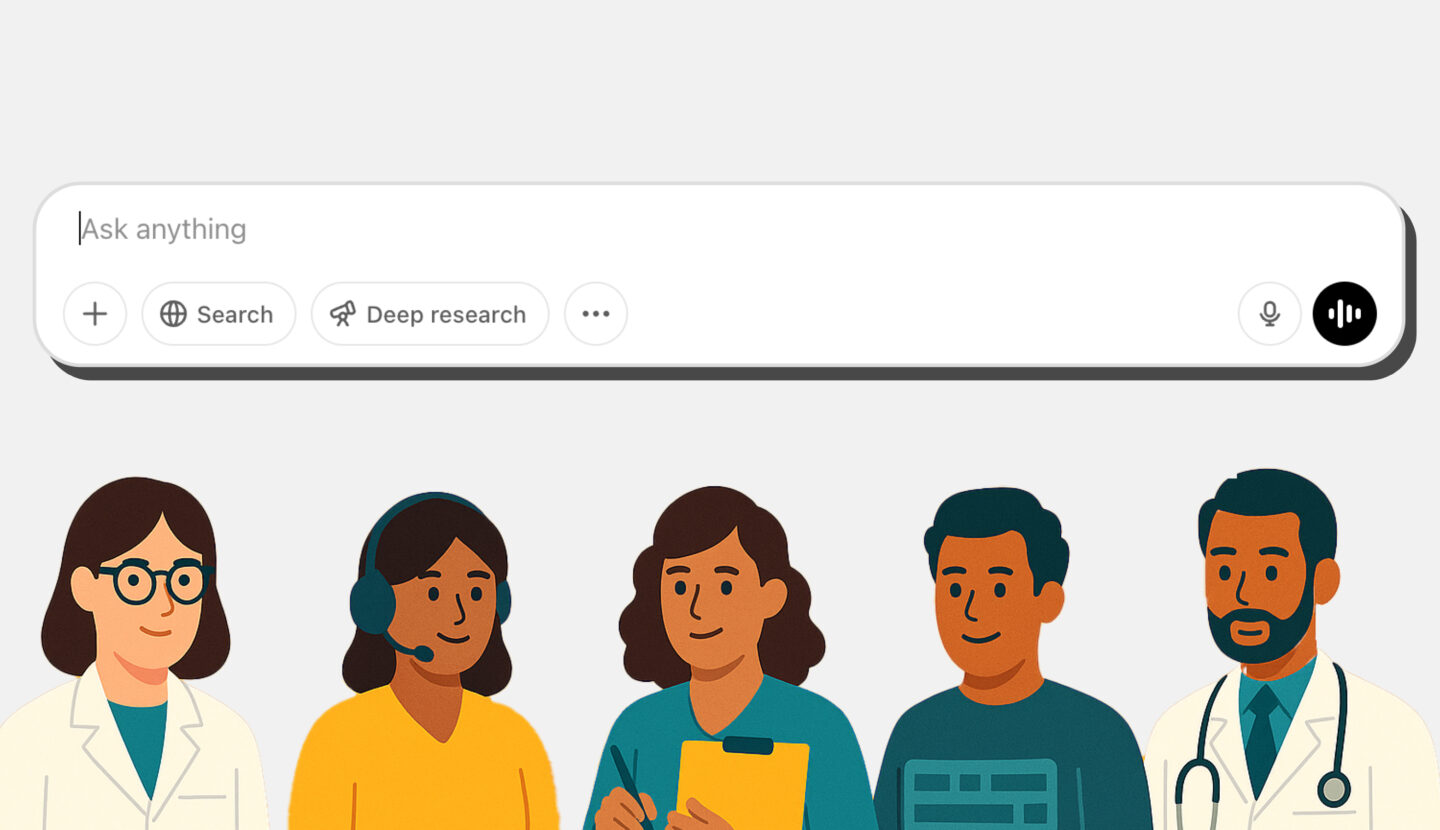
Here are some of the experts I work with on a regular basis:
- Programmer: write, debug, and explain code. I’m an experienced software developer, yet more than 95% of the code I ship is now written by AI.2
- Manager: plan and debug my days, weeks, and months. There’s an example transcript in section four below.
- Product designer: ideate, create prototypes, design and critique user interfaces, and analyse user interview transcripts.
- Writer and editor: give feedback on my writing, rewrite things, write entire drafts based on a rough dictation, proofread, and fix Markdown.
- Data analyst: write SQL queries, analyse spreadsheets, create graphs, and infographics.
- Language tutor: do written exercises and have spoken conversations in French and Icelandic.3
- Intern: extract data from text, get key quotes from an interview, resize a folder of images, merge a spreadsheet, and write an SQL query.
- Handyman: answer household questions, such as how to clad a shed or reset a washing machine.
And some of the specialists I consult less frequently:
- Doctor
- Lawyer
- Reading partner4
- Product manager
- UX researcher
- Research assistant5
- Financial advisor
- Chef and nutritionist
- Fitness coach
- Travel guide
- Photographer
- Philosophy tutor
- Career coach
Of course, the picture above was created by my AI illustrator.
2. You have a thought partner
For me, conversational AI is most helpful as a thought partner.
Many times a week, I press the microphone button on my laptop,6 or the ChatGPT mobile app, and think out loud.
I speak my stream of consciousness, saying whatever is on my mind. This might be something I’m stuck on, a confusion, an uncertainty, or just a reflection on how I feel.
For example: this morning I wanted to finish the second draft of this article. The article outline was settled, and most sections were half written. But looking at it, I felt tired and demotivated, and wasn’t sure where to start. So I described the situation to ChatGPT.
Its suggestion: break this down into a to-do list of small tasks that I can blast through. Make the first few things easy to build up momentum. Seems good — so I shared the Google Doc with ChatGPT, and asked it to make me a to-do list. I pasted that back into my working notes, and off we went.
More generally: when I’m working on complex tasks, it helps to write down my thoughts. Prior to ChatGPT, I’d go to doc.new and write into a ‘scrap paper’ Google Doc. With voice dictation, the effort of doing this is much lower, so I do it more. And conversational AIs are very good at crisply summarising a mess of thoughts. And then they’ll often offer useful thoughts of their own — in much the same way that a coworker would if I talked something through with them. It is wonderful.
3. How ‘Team Hartree’ has helped me
I work with ‘Team Hartree’ — my team of AI experts — every day.
Below, I’ll share some stories about how they’ve helped. I’ll include screenshots, transcripts, and screencasts — to show concrete details of how you can interact with these systems. Hopefully, the list will inspire you to try things.
In my personal life
My AI doctor helped me track and treat symptoms of an increasingly serious infection.
My human doctor prescribed antibiotics, but things kept getting worse.
My AI doctor noticed that I was taking the wrong antibiotics, given the origin of the infection.
My human doctor agreed — the chat transcript reminded her of a crucial consideration. We switched my antibiotic, and the infection was cured.
If I’d stayed on the original medication, I’d probably have ended up in hospital.
This story of ‘AI doctor corrects a GP’s mistake’ is consistent with the results of various studies7 and many stories I’ve heard from friends and acquaintances.
A German landlady asked a friend for more than €1,000 of fictitious damages and threatened legal action.
ChatGPT told us about tenant rights in Germany and gave advice on next steps. It wrote a formal reply letter in English and German. The landlady — who had a track record of attempting scams like this — gave up.
I attended a talk by John Vervaeke. Live talks are often too slow for me because I’m used to watching things at 2x speed.
So, while he was speaking, I chatted with an AI simulation of John Vervaeke, riffing with him on the claims he made during the talk. I understood his position better, improved my own reflection, and was better prepared for the Q&A.
Breakfast time, road trip, what should we do today? Five minutes with ChatGPT, and we have a great plan — and a map — tailored to us.
Our AI tour guide made one important mistake: incorrect estimates of the journey times between destinations. Presumably, this information wasn’t in the training data nor easily available via web search. A human would have said “I’m not sure about the times,” but ChatGPT just made up some times and didn’t flag the uncertainty.
To get the correct journey times, I asked it to write a Python script to fetch the data from a maps API.
Buying options always gives me a headache. In this case, I explain what I’m trying to do, and screenshot the options that are available. ChatGPT analyses the options, does the math, and illustrates different scenarios.
Be sure to write use code in your prompt so that it does all the math with code. Without that, it may try to do math ‘in its head,’ which greatly increases the chance of error.
At work
ChatGPT can write useful Python scripts in seconds (and tell you how to run them).
Want to convert a folder of MP3s from stereo to mono? Download all the images from a web page? Remove duplicates from a huge spreadsheet? You’re good.
As it happens, I’m an experienced software developer, and AI has completely changed the way I code. More than 95% of the code I commit is now written by AI.2
I make weekly, monthly, and quarterly plans in a Google Doc. This doc is shared as context in a Claude Project.8
Every Monday, I think out loud with Claude about how the past week went, then make my plan for the week.
I do this by speaking into my mobile phone, usually while walking around. This gives me good energy for this kind of reflection.
Claude summarises, and sometimes offers helpful suggestions, considering things in the context of my priorities for the month and quarter. When we’re done, it writes up my review and plan using the template I keep in the Google Doc.
A friend shared an idea for a web app. I asked ChatGPT to develop the idea and design a mockup. This took five minutes.
In the screencast below, Sahil Lavinga writes a product requirement document, iterates with feedback, designs an API and a front end, builds an MVP, and a bunch of other stuff.
“Two weeks of work in two hours” sounds like hype, but his estimate does not strike me as wildly off. If I dial up my scepticism to the maximum, I might call this two weeks of work in two days.
4. How to start getting help from your team
You can start in one minute:
- Go to chatgpt.com, and sign up to get a free trial of GPT-4o (one of their best models at the time of writing).
- Think: what is on your mind? What do you want to get done today? What is a challenge you face right now?
- Tell ChatGPT, and see how you get on.
Get a paid plan to access the best models
I strongly recommend you get a paid plan for at least one month so that you can experience the very best of current capabilities, without rate limits.
As of April 4, 2025, the free version of ChatGPT gives you limited access to GPT-4o, which is their best model for day-to-day use cases. But: you don’t get access to their most powerful reasoning models nor to their “Deep Research” agent.
If you want more detail on which AI models to use and how, Ethan Mollick’s guide is worth a look.
Keep in mind: just like a human, AIs are best able to help if you give them lots of context. Think of them like a person who doesn’t know you at all, and err on the side of oversharing.
Instead of:
“Help me write a cover letter for a project manager job.”
Try:
“I’m applying for a senior project manager position at a tech startup. I have seven years of experience leading teams and delivering software products. Here’s my resume [attach resume] and the job description [paste description]. Can you help me write a cover letter? Make it fairly informal and follow Paul Graham’s advice on writing style.”
If you’re not sure what context to give, just ask the AI. For example:
I’d like to write a cover letter for a job application. To start, please ask me 10 questions to get the context you’ll need to help.
5. How to get the most out of your team
Working with AI is a skill, and you’ll get far more out of these systems as you level up.
To get started, I suggest:
- Spend at least five hours actively using AI in meaningful ways.
- Spend at least five hours on focussed learning and experimentation — seeking ideas and advice from others, testing prompts, trying different AI models, and pushing the limits of what’s possible.
This is likely one of the best self-development investments you can make in 2025.
Some advice below.
I’m repeating this point from above because it is critical.
Just like a human team, AI teams are best able to help if you give them lots of context.
Tell them who you are, where you work, and what your goals are. Share them on project plans and so on. They can handle a lot of text, so paste lots of relevant information into the chat or project knowledge.
Unlike a human team, AI assistants are good at processing text even when it is very messily formatted. Paste in rough notes, dictations, call transcripts, brainstorms, and so on.
If you want to do something more, make it easy. So:
- Get the mobile apps
- Get the desktop apps and learn the keyboard shortcuts
- Use speech input6
Then, develop the habit of trying things. Set reminders if you have to.
Free AI tools are useful, but paid models are often much better. You’ll get better reasoning, faster responses, larger memory, fewer mistakes, and much more.
For some tasks, it makes sense to talk to several different models at once — pasting the same starting text into each one. Their responses will often complement each other, e.g. one will suggest ideas that the other doesn’t, or give greater emphasis to a particular angle.
Subscribe to a couple of the best paid services for at least a month to experience their full capabilities. You’ll probably keep the subscriptions.
AIs have a different cost profile from human experts and a different range of strengths and weaknesses.
Some tips:
1. Ask for more than you need
AI won’t get tired or annoyed if you ask for 10 versions of something rather than two.
Often, it’s easier to choose from a menu than to describe exactly what you want. Keep the best bits. Repeat.
2. Encourage it to serve as thought partner
Ask: “what’s missing?”, “what should I be asking?”, “what would a smart critic flag here?”, or “Please brainstorm.”
3. Paste in messy input
AIs are great at handling messy input. Long voice memos. Stream-of-consciousness brainstorms. Sprawling transcripts. Cluttered meeting notes.
Paste in the mess. Ask for a summary, a to-do list, main themes, contradictions, or questions worth exploring.
4. Embrace its lack of ego and judgement
AI doesn’t care if your question is ‘stupid,’ or your idea is half baked. Say things you might not say to humans, without fear of embarrassment or wasting someone’s time.
5. Don’t dismiss it too quickly
Some people come in sceptical, get some bland or mistaken answers, and write it off. That’s like dismissing Google because your first few searches didn’t go very well.
Try tweaking your prompt, giving more context, or asking a follow up question. If that doesn’t work, try another model. Sometimes, they genuinely won’t be able to help you. But: uselessness in some areas is compatible with extreme usefulness in others.
Develop your skills by seeking ideas and inspiration from others.
Try things like:
- Join Slack/WhatsApp/Discord groups where people post screenshots and prompts
- Follow people on X
- Watch screencasts on YouTube
Warning: AIs get things wrong
AIs get things wrong sometimes. The most well-known problem: when they don’t know the answer to something, they are prone to making things up — a phenomenon known as hallucination.
Hallucinated details are often plausible but incorrect, so they can be difficult to spot (e.g. the made up journey times in my tour guide example above).
This problem is becoming less common. Nonetheless: when accuracy is critical, check the outputs!
To understand why AIs sometimes make things up, and when they are most likely to do so, see here.
If you’ve seen a great practical guide to reducing the risk of hallucinations, please send it to me, and I’ll add it here.
6. Next steps
Every day for the next two weeks, try calling on your team for something.
Tell your friends and colleagues (and me) about some of the cool things you do, and some of the things that don’t work out.
Have fun! Then… continue reading our resources on why future AI systems may ruin the world — and what you can do to prevent that.
7. Further reading
Ethan Mollick’s blog. Start with “Using AI right now: A quick guide” and “GPT-5: It just does stuff”.
Olivia Moore tries lots of AI products. Start with this list of tools she’s using.
Many examples of how people use LLMs. For a video, try Andrej Karpathy’s “How I use LLMs”.
Podcasts: AI & I. Start with Dwarkesh Patel and Simon Eskildson on using LLMs to learn. Another one: How I AI.
“Lean into laziness” and “my current writing workflow” by Alex Lawsen.
Anthropic’s AI fluency course gives a basic introduction to how LLMs work, and how to think about using them. For a deeper dive, see Andrej Karpathy’s “How LLMs work”.
There are lots of great tutorials for specific use cases e.g. creating images or coding with Claude Code. Search on YouTube.
Notes and references
- This guide will focus on ChatGPT. I chose ChatGPT because, at the time of writing, it has the best free plan. Similar conversational AI services include Claude, Grok, Gemini, and Deepseek. The “best” service for any given use case changes on monthly — sometimes weekly – basis.
The “team of experts” metaphor is imperfect in some important ways. Conversational AIs have strengths and weaknesses that humans do not have. See section 5.4.↩
- This is also true of 25% of Y Combinator startups in the spring 2025 cohort.↩
- See Learning a new language with ChatGPT↩
- See Tyler Cowen on how he reads with AI.↩
- See Sarah Constantin using Deep Research tools for literature reviews.↩
- On Mac, use Superwhisper or Wispr Flow. Wispr Flow is a bit easier to install, but Superwhisper has the option to transcribe without sending your audio to the cloud.↩
- See here, here, and here.↩
- I use Claude here — not ChatGPT — partly because Claude currently lets you add Google Docs to project context, while ChatGPT does not.↩

